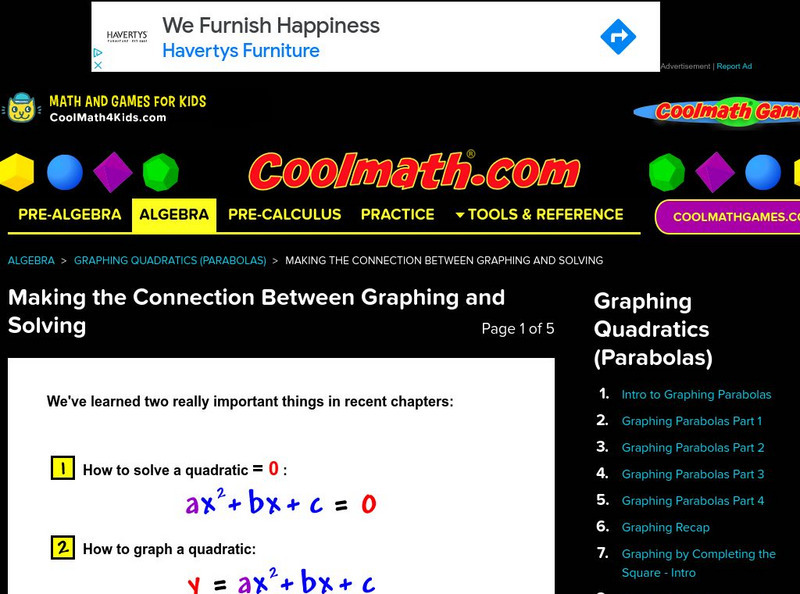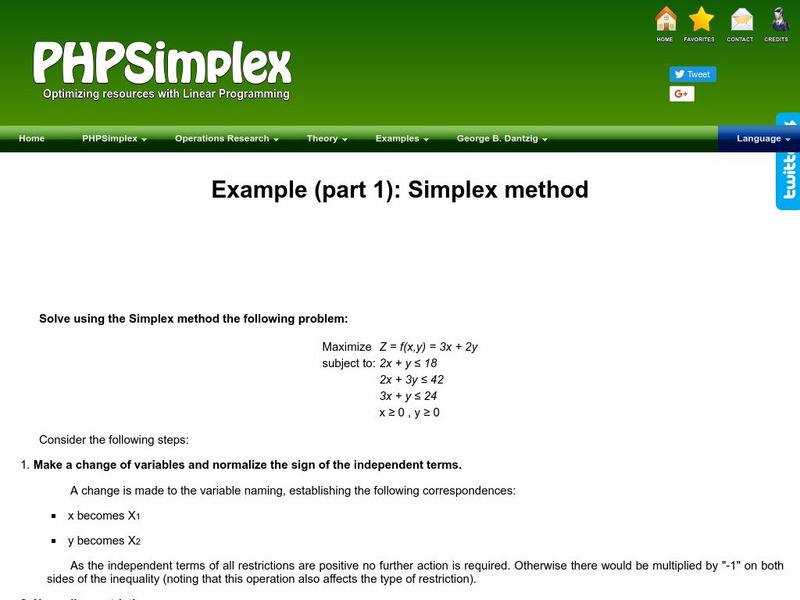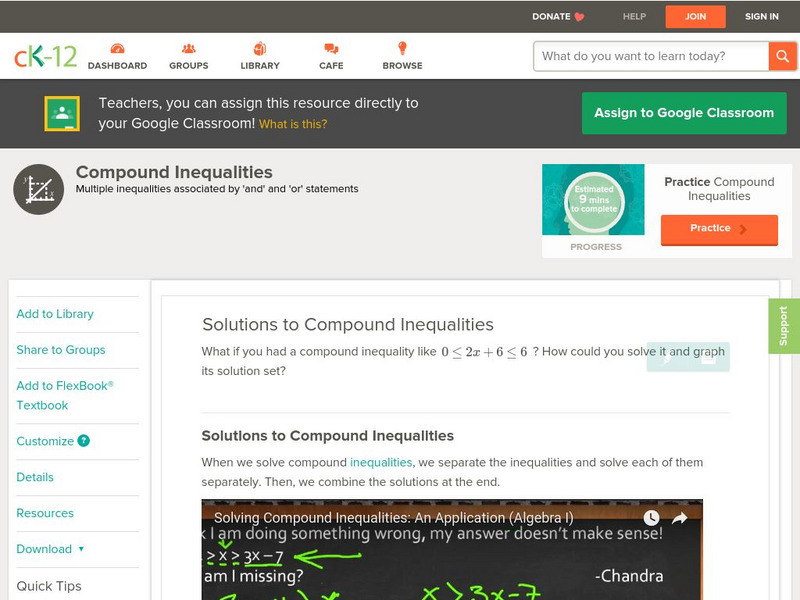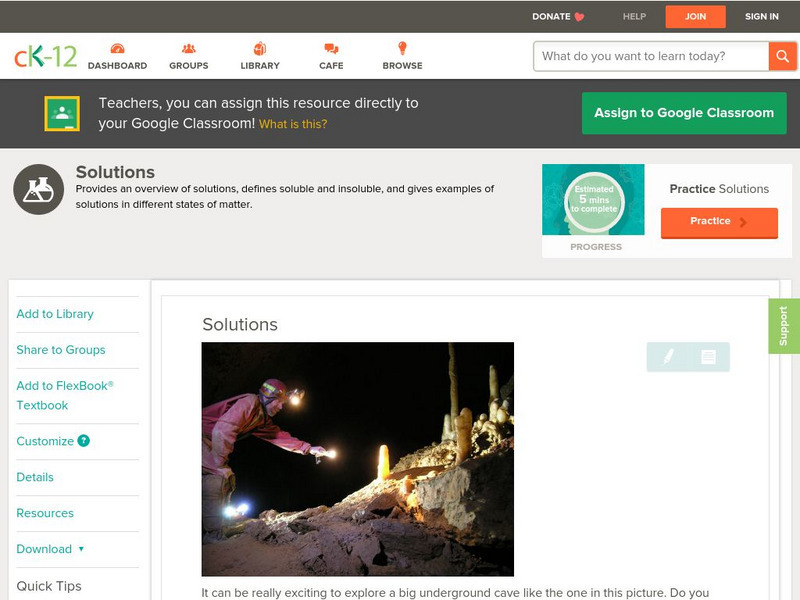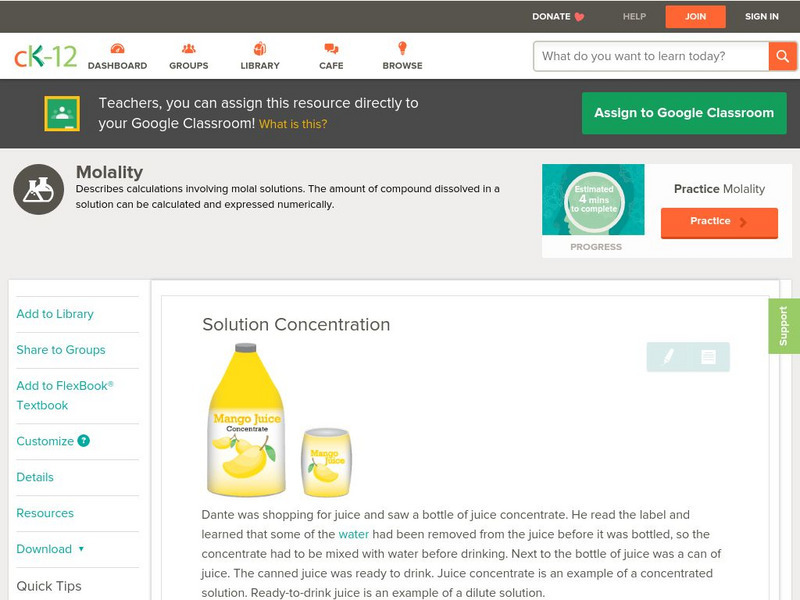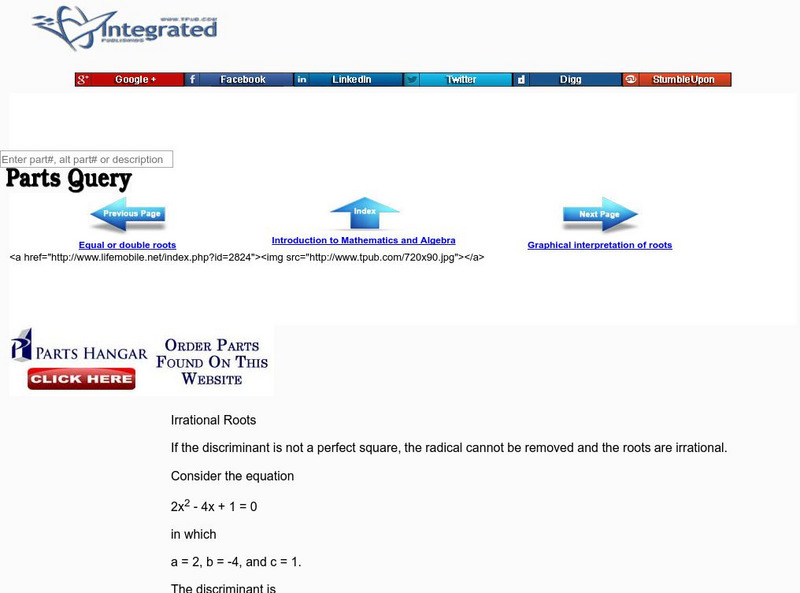Other
Algebra.com: Quadratic Equation Solver
An interactive solver for quadratic equations shows solutions using several methods, including graphing and the quadratic formula.
CK-12 Foundation
Ck 12: Physical Science: Properties of Solutions
[Free Registration/Login may be required to access all resource tools.] How solutes affect solvents, the freezing point depression and boiling point elevation.
TeachEngineering
Teach Engineering: Mix It Up
This lesson plan introduces the properties of mixtures and solutions. A class demonstration gives the students the opportunity to compare and contrast the physical characteristics of a few simple mixtures and solutions. Students discuss...
Cool Math
Coolmath: Making the Connection Between Graphing and Solving
Description and examples of the connection between solving and graphing quadratics.
Frostburg State University
University of Frostburg: How Nonpolar Molecules Dissolve
This site from the University of Frostburg provides an explanation of the process by which nonpolar molecules dissolve in water.
Frostburg State University
General Chemistry Online: How Can Molarity Be Converted
Resource provides information about converting molarity to normality.
Frostburg State University
Frostburg State University: Polar Solutes
Graphic representing polar solute particles, with brief accompanying notes. Part of a slide show on chemical change.
Frostburg State University
General Chemistry Online: Solutions Faq
An extensive list of frequently asked questions about solutions. Dive in and gain better understanding to things like molality and colligative properties throughout the study of solutions.
Other
Php simplex.com: Example (Part 1): Simplex Method
An explanation and examples of the steps of the simplex method to determine the most feasible solution.
Khan Academy
Khan Academy: Number of Solutions of Quadratic Equations
Analyze quadratic equations in order to determine how many different real number solutions they have. Students receive immediate feedback and have the opportunity to try questions repeatedly, watch a video or receive hints.
CK-12 Foundation
Ck 12: Algebra: Use Graphs to Solve Quadratic Equations
[Free Registration/Login may be required to access all resource tools.] Determine the number of solutions to a quadratic equation and find such solutions by graphing.
CK-12 Foundation
Ck 12: Algebra: Solutions Using the Discriminant
[Free Registration/Login may be required to access all resource tools.] Learn how to use the discriminant to solve problems and determine the number of solutions to quadratic equations.
CK-12 Foundation
Ck 12: Analysis: Finding Zeros of Polynomials
[Free Registration/Login may be required to access all resource tools.] This lesson shows you how to find all the rational and real-number solutions of a polynomial. Students examine guided notes, review guided practice, watch...
CK-12 Foundation
Ck 12: Physical Science: Solutions
[Free Registration/Login may be required to access all resource tools.] What a solution is and its different parts, definition of soluble and insoluble. Solutions in different states of matter.
CK-12 Foundation
Ck 12: Physical Science: Solution Concentration
[Free Registration/Login may be required to access all resource tools.] Definition of concentration of a solution, the difference between concentrated and dilute solutions and how to calculate the concentration of a solution.
Integrated Publishing
Integrated Publishing: Irrational Roots
A brief lesson on when irrational roots occur when solving quadratic equations, and how to find them. Contains examples, exercises, and solutions.
Purdue University
Purdue University: What Is a Solution?
Unusual graphics help students visualize solutions on a molecular scale.
Utah Education Network
Uen: Finding Solutions
Students will use the terms solute and solvent in describing a solution. They will sketch a solution at the particle level and design and conduct an experiment to determine the factors (e.g., agitation, particle size, temperature)...
Utah Education Network
Uen: Forming Ionic Compounds
Students will practice making and recording observations about various compounds and their aqueous solutions, write the formulas for the compounds, then perform chemical reactions and write the names and formulas of the products.
Alabama Learning Exchange
Alex: Get in the Mix
Students will be able to classify a mixture as homogeneous or heterogeneous. Students will be able to create a solution. Students will be able to identify the solute. Students will be able to identify the solvent. Students will be able...
CK-12 Foundation
Ck 12: Physical Science for Middle School
This digital textbook covers core physical science concepts and includes interactive features, real world examples, and videos.
CK-12 Foundation
Ck 12: Chemistry for High School
This digital textbook covers core chemistry concepts and includes interactive features, real-world examples, and videos.
Science Buddies
Science Buddies: Solubility Science: How Much Is Too Much?
In this science activity, you will find out how much of a compound is too much to dissolve.
Utah Education Network
Uen: Successful Solutions
Young scholars will accurately prepare two solutions and use them to perform a Briggs-Raucher (starch-iodine) reaction.





